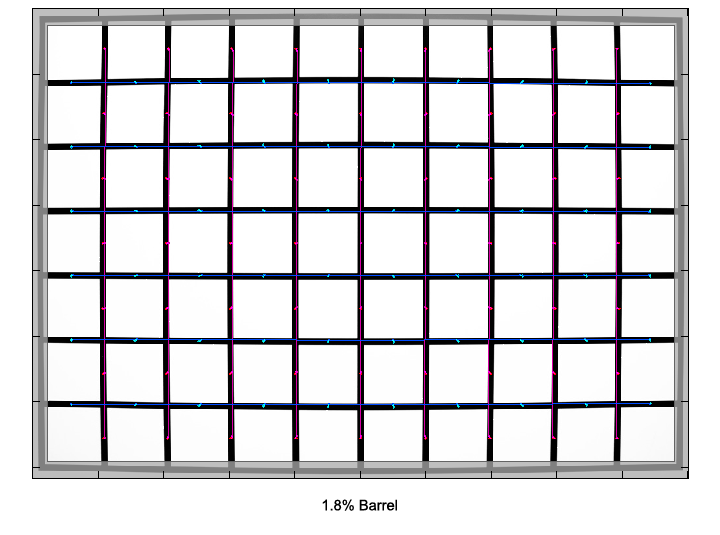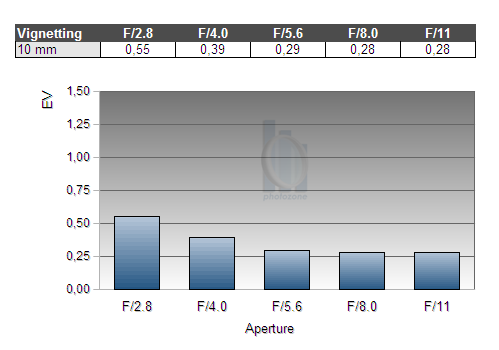|
1 Nikkor 10mm f/2.8 - Review / Test Report - Analysis |
|
Lens Reviews -
Nikon CX
|
|
Page 2 of 3

Distortion
The lens shows barrel type distortion of around 1.8%. This is a typical characteristic for such a wide-angle lens, still the amount of distortion can be visible and disturbing for subjects with straight lines near the image border. However, the distortion is uniform and thus easy to remove in post processing.

The chart above has a real-world size of about 120x80cm.
Vignetting
Typical for a large aperture lens, the 1 Nikkor shows pronounced vignetting wide open. As usual, stopping down reduces the issue considerably, but in the tested aperture range the amount of corner light fall-off never drops below 0.5 EV.
The chart below shows the vignetting characteristic based on NEFs converted by RAW Developer, which does not apply any correction.

Unlike distortion, Nikon chose to have vignetting corrected in the camera when shooting JPG (or using Nikon's View NX or Capture NX software to convert NEFs). The chart below shows the vignetting based on the same images as the previous chart, but automatically corrected by the camera firmware.

MTF (resolution)
The lens delivers excellent resolution in the image center straight from the maximum aperture down to f/8. Stopping down further reduces sharpness considerably due to diffraction effects.
The borders and corners deliver visibly softer results wide open, but stopping down to f/4 or f/5.6 increases the resolution to very good values. Fom f/8 onwards, diffraction takes its toll again.
Please note that the MTF results are not directly comparable across the different systems!
Below is a simplified summary of the formal findings. The chart shows line widths
per picture height (LW/PH) which can be taken as a measure for sharpness.
If you want to know more about the MTF50 figures you may check out the corresponding
Imatest Explanations

Chromatic Aberrations (CAs)
The level of lateral CAs (color shadows at harsh contrast transitions) is in the range of around 1.4 up to almost 1.8 pixels in the tested aperture range. However, CAs can easily be corrected in software, in fact the Nikon 1 cameras automatically do so if you shoot JPGs.

|